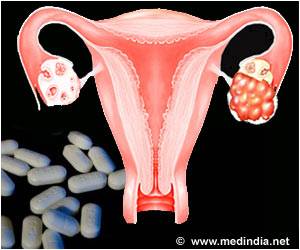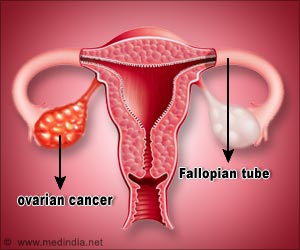The efficiency of artificial ovaries is being tested here in this study. This is considered as one of the innovative techniques for restoring fertility in ovarian cancer patients.

‘It is believed that through the method an artificial ovary would help women fall pregnant, despite suffering from cancer and taking strong medication that used during chemotherapy that can adversely affect patients' fertility.
’





Together, they have been researching innovative techniques for restoring the fertility of cancer patients and have published their creative results in Scientific Reports, the open access magazine published by Springer Nature.An artificial ovary would help women fall pregnant, despite suffering from cancer and the strong medication used during chemotherapy that can adversely affect patients’ fertility. The scientific community has been investigating how best to reconstruct female ovaries in the laboratory and which materials to use for a long time. An interdisciplinary team of researchers made up of engineers and materials scientists at the Chair of Biomaterials at FAU and gynecologists and natural scientists at the Department of Obstetrics and Gynaecology at Universitätsklinikum Erlangen is now providing new approaches.
Success with electrospinning
In their study ’Electrospun patterned porous scaffolds for the support of ovarian follicles growth: a feasibility study,’ the scientists have been using a method called electrospinning that is used in materials science. This technique is based on applying a high electric potential between two electrodes with opposing polarity. This high voltage can overcome the surface tension of a polymer solution and thus enable the solution to vaporize completely and form a fibrous structure.
’Electrospinning is extremely versatile, as we can use a wide variety of natural and synthetic polymers,’ explains Dr. Liliana Liverani, who is the scientific project coordinator. ’In our current study, we used the biodegradable material poly-epsilon caprolactone and a mixture of this material with gelatine for the first time and created a scaffold of very thin fibers that mimic the natural structure and shape of the ovarian cortex.’
Advertisement
’This is an important step towards an ideal artificial ovary that imitates the natural organ in terms of environmental conditions for the growth and maturity of follicles. These results are very promising, but further research is required before any further development towards clinical applications can be made’, agree the teams led by materials scientist Prof. Aldo R. Boccaccini and Dr. Liliana Liverani and the gynaecologists and natural scientists at the Department of Obstetrics and Gynaecology, Prof. Dr. Ralf Dittrich, Nathalie Raffel and Dr. Amir Fattahi.
Advertisement
Up to now, women and girls diagnosed with cancer can only preserve their chances for pregnancy by having ovarian tissue removed, frozen and re-implanted after they have recovered from the disease. Although this method is considered safe, certain types of cancer can penetrate the ovarian tissue, and cancer can be reintroduced when the tissue is re-implanted. The aim of the new method is to completely replace the diseased tissue with an artificial ovary and restore patients’ fertility, thus significantly increasing their quality of life.
All over the world, cases of cancer are on the increase. This is documented by the World Health Organisation’s 2014 World Cancer Report and the Cancer in Germany report published by the Robert Koch Institut (RKI). Around 2000 children in Germany are diagnosed with cancer every year, which poses major challenges regarding treatment-related long-term effects. ’Both reports mention a continuous improvement in treatment that enables patients to live longer with cancer or after they have recovered,’ says Prof. Dr. Ralf Dittrich from the Department of Obstetrics and Gynaecology at Universitätsklinikum Erlangen. ’The five-year survival rate for children and young people with cancer is now around 80%. This is the reason why we are dedicating our resources to improving the quality of life and are looking for solutions across all disciplines’.
Source-Eurekalert










